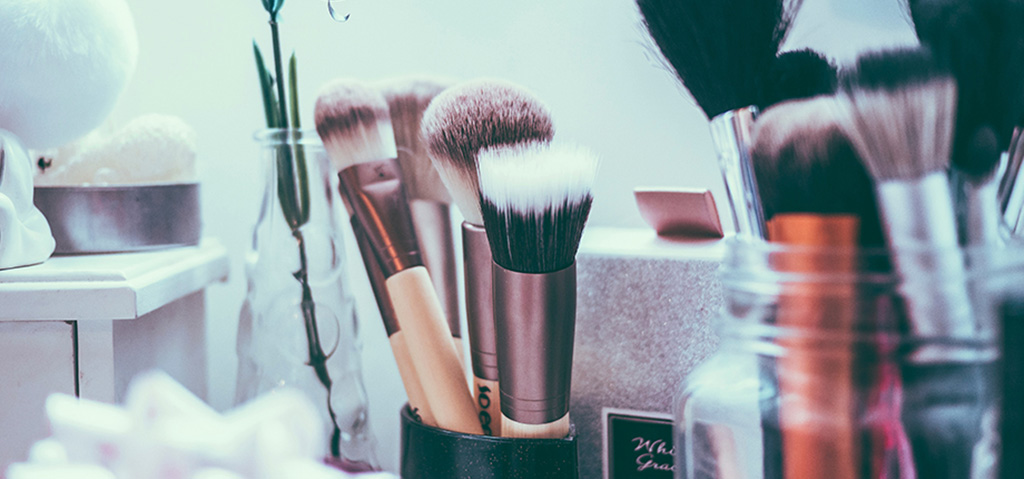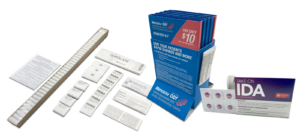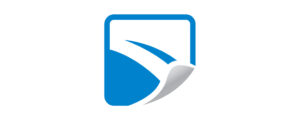Your brand’s guide to customizing cosmetic labels

Cosmetic brands live and die by the quality of their labels. Unlike other industries like food and pharmaceuticals, consumers do not need cosmetics. They are merely products of choice. As such, brands look to stand out from the competition — attracting customers with better, cleaner, more striking designs.
Vivid colors, consistent color reproduction and eye-catching embellishments are the name of the game. Outstanding label design can, by drawing the eyes of more customers, have a very real impact on sales.
When designing a custom cosmetic label, brand image and shelf appeal are of paramount concern. You need to communicate your product’s story —whether it’s a luxury perfume or a drug store blush— through your label.
In this guide to cosmetic label customization, we’re going to cover everything you need to consider when designing the perfect-fit label for your brand.
From start to finish, you’ll need to think about:
- What information you need to include on your cosmetic label
- Custom shapes for cosmetic labels
- Considerations for choosing moisture- and product-resistant adhesives and materials
- How label embellishments can make your product stand out on the shelf
When it comes constructing a label for your cosmetic product, the sky is the limit. You just need to work with your label manufacturer to customize a label that best represents your brand and communicates the value of your product to your customer.
The non-negotiables: What absolutely has to be on your label
All cosmetics made and distributed in the U.S. must obey two laws: (1) the Federal Food, Drug and Cosmetic Act (FD&C) and (2) the Fair Packaging and Labeling Act (FP&L). Intended to protect cosmetic customers from potentially harmful products and deceptive labeling, these laws dictate what must be displayed on your cosmetic label.
You can review the FDA’s cosmetic labeling requirements in full here, but they can be distilled into four basic questions your label must answer:
- What is your product?
- What should your product be used for?
- How much (weight / volume) is in the container?
- What happens if your product is used improperly?
Once you answer those four questions, your design options are virtually limitless. If you struggle to fit all of the branding, usage information and design elements you want onto your label, there are several solutions you can consider: near field communication (NFC) tags, piggy back labels and extended content labels (ECLs).
Near field communication (NFC) tags for mobile engagement and label-specific information
NFC tags allow you to program product-specific information into your cosmetic label. The tags themselves are small enough to affix to compacts and lip balms.
Using their smartphones, customers can access informational or promotional content about the product they’re buying in real time from your company’s server. The landing page you direct them to can contain your brand story, related offers or usage information. What’s more, you can track engagement with the content and learn valuable information about your customers. You can then leverage that engagement data to drive the success of future promotions.
Piggyback labels
Piggyback labels are comprised of two layers, one which can be removed from the packaging and one which can’t. This gives you twice the space on your label for communicating regulatory and promotional information.
Extended content labels (ECLs)
ECLs are labels which can fold out like a booklet, each fold containing more branding or information about the product. ECLs can allow you to communicate as much as six times the information on your label.
Custom cut your labels to fit the contours of your container or logo
The shape of your label should be more than an afterthought. Custom label shapes are a great way to showcase the one-of-a-kind value of your cosmetic product.
Custom die-cut labels
Practically every pressure-sensitive label is die cut. All “die cut” means is that the label was cut into its final shape using a metal die tool, similar to how dough is cut with a cookie cutter. Most die-cut labels are standard shapes (i.e., circles, ovals, squares).
You can, however, customize a die in any shape or size. Custom die cut labels are one of the best ways for cosmetic brands to differentiate their packaged products. On a shelf with mostly oval or square labels, a label cut to exactly fit the contours of the container will certainly stand out.
Shrink sleeve labels
Shrink sleeves —full-coverage labels which are heat-shrunk around a container— are another way to maximize branding space and fit the contours of your container. You can have sections of the sleeve be transparent to showcase the product, or print the entire sleeve for 360-degree branding.
Shrink is great for versioning with variable imaging — for example you’ll see different cartoon characters featured on a single style of bubble bath, all from a single digital print run. With variable imaging, shrink sleeves can provide a great deal of variety in a single print run.
Moisture- and product-resistance considerations for cosmetic labels
Cosmetic and beauty labels not only need to stand out on the shelf, but they also need to maintain their performance while in use. For cosmetic products used in or near a shower (i.e., perfume, lotion, shampoo, bath products) this means paying attention to your label’s ability to sustain its appearance in high-humidity environments.
Here’s what we recommend when customizing a label to meet the demands of a high-moisture situation:
Your adhesive options
Cosmetic labels must adhere to their container, even when subjected to water, plasticizers, alcohol and other substances that might exist in your product. Its ability to maintain its appearance when subject to moisture or squeezing (as in a squeezable face wash tube) can largely be attributed to the adhesive used.
Generally, for dry environments with no humidity, we’ll recommend a standard all-temperature adhesive. For humid environments, however, you need to choose an adhesive with high solvent resistance, or the ability to maintain stickiness when in contact with water, alcohol or other solvents. Another factor to consider for cosmetic applications is shear resistance. Adhesives with high shear resistance are less likely to tear or crack when subject to stress, as when squeezing a tube.
You’ll also need to consider your packaging and label materials when choosing an adhesive. For example, soft-touch containers —a type of bottle or tube that is velvety to the touch—require very aggressive permanent adhesives to attain full adhesion. And with clear film labels, you need to use ultra-clear permanent adhesives.
There’s a lot to think about when it comes to choosing a cosmetic label adhesive. Your label manufacturer should be able to help you choose an adhesive that will work for your particular product and application. It’s important to work with your label manufacturer to test your material choice before manufacturing your order. That way, you can be confident the adhesive will stick to the substrate —whether a squeezable tube, soft-touch bottle, or whatever material packages your product— in the environment in which it will be used.
Your label material
Paper face stock is usually not the best choice for shampoo, lotion or other beauty products where leakage, humidity and water could damage your label.
Film labels and shrink sleeves are great alternatives for cosmetic labels where moisture is of concern. Not only does film provide the popular “no-label” look, but the ultra-clear permanent adhesive it requires can endure damp environments without losing its appearance.
Shrink sleeve labels are another great moisture-resistant option for cosmetic products. Beyond moisture resistance, shrink sleeves give you 360-degree branding on your product, shrink sleeves provide you with virtually limitless design options.
Your custom cosmetic label manufacturer should point you toward the most cost-effective adhesive and material options for your application and budget. For more guidance on how to customize cosmetic labels for tough environments, read our pressure-sensitive label solutions guide. You’ll not only the basics of label materials and design — you’ll also get tips on how to reign in the cost of your labels.
Custom cosmetic label embellishments: Your key to standing out on the retail shelf
The key with a high value-added sector such as cosmetics is to communicate the value of your product to the consumer. In a high-value industry like cosmetics, even the most elaborate label designs will only amount to a small portion of a product’s retail price. And in a store, where consumers quite literally judge your product by its cover, the attractiveness of your label is vital to your sales.
Here are some ways you can embellish your cosmetic label, making it align with your brand vision and stand out on the shelf:
Foil stamping
Foil stamping is probably one of the more common forms of label embellishments. Essentially, it allows you to highlight text or design elements in reflective foil. Especially in luxury cosmetic products, this is a great way to communicate the value of your product through label design.
Embossing
If you’d like to add dimension to your product label, embossing is a great option. Embossing stamps patterns, text or images into your label, so there are ridges and valleys within the label itself. Dually a tactile and visual design element, embossing is a tried-and-true way to differentiate your product.
Laminates
Laminates are a great way to add high-gloss, satin or matte finish to any cosmetic label. They not only add shelf appeal to your product, they also serve to protect your labels from scratches, chemicals and moisture.
Getting the “no-label” look
To achieve the minimalist, “no-label” look, many luxury cosmetic brands use clear film. With clear film labels, your logo, the name of the product and any other design elements you’d like to add will look as though it was printed directly onto your packaging — an incredibly desirable look in the cosmetic industry.
Although not as prevalent as clear labels, films are also available in silver and white. You can use the silver film to emulate foil stamping by backing the film with opaque white and allowing the silver to show through. You can also tint the silver in any ink color you desire, such as gold, copper or bronze, to further customize your label.
There are three main film products you can choose from:
- Polypropylene film
Available in three colors —clear, silver and white— polypropylene film is probably the most common film used in cosmetic labels. - Polyolefin film
Polyolefin film is great for use on squeezable tubes and bottles, and comes in two colors: white and clear. - Polyethylene film
Polyethylene film is available in all three colors, and is also suitable for use on squeezable packaging.
Rotary screen printing
Rotary screen printing is a great way to bring any design to the next level. You have great versatility, from opaque whites to vibrant hues. You can also differentiate your label with tactile finishes such as raised text, glossy varnishes and to-the-millimeter precision registration.
Here are some popular rotary screen printing options for cosmetic labels:

- Printing super opaque whites
Super opaque white ink is vital to achieving the “no-label” look. Printing a sublayer of opaque white ink under your label design prevents light from penetrating the clear label, and allows all colors in your design to appear more vibrant and defined. - Simulated foil stamping
You can imitate the look of foil stamping by using special inks. Whether you’d like gold or silver text or a metallic design element, rotary screen printing is a cost-effective alternative to foil-stamped cosmetic labels. - Precision to print ultra-fine details
In personal cosmetics like lip balms and compacts, you need to communicate a lot of information in a limited amount of space. Rotary screen printing allows you to have a high level of control and precision — you can print as small as 2-point text with the utmost clarity. - UV curable inks
Screen printed labels with UV curable inks are resistant to damage from alcohol, oils and other substances common to cosmetic products. You can also use UV curable inks to achieve a sleek, silky appearance for your product’s label.
The versatility, precision and high-end look of rotary screen printing makes it a popular choice for cosmetic brands looking to differentiate their product on the shelf.
By working with your label manufacturer to bring your label to life, nearly anything is possible. To see the label customization process in person, check out our guide to solving label challenges. It takes you through seven real-life examples of label customization, design and manufacturing. You’ll learn how you can cut costs, shrink lead times and achieve your brand vision. Download the guide now.



